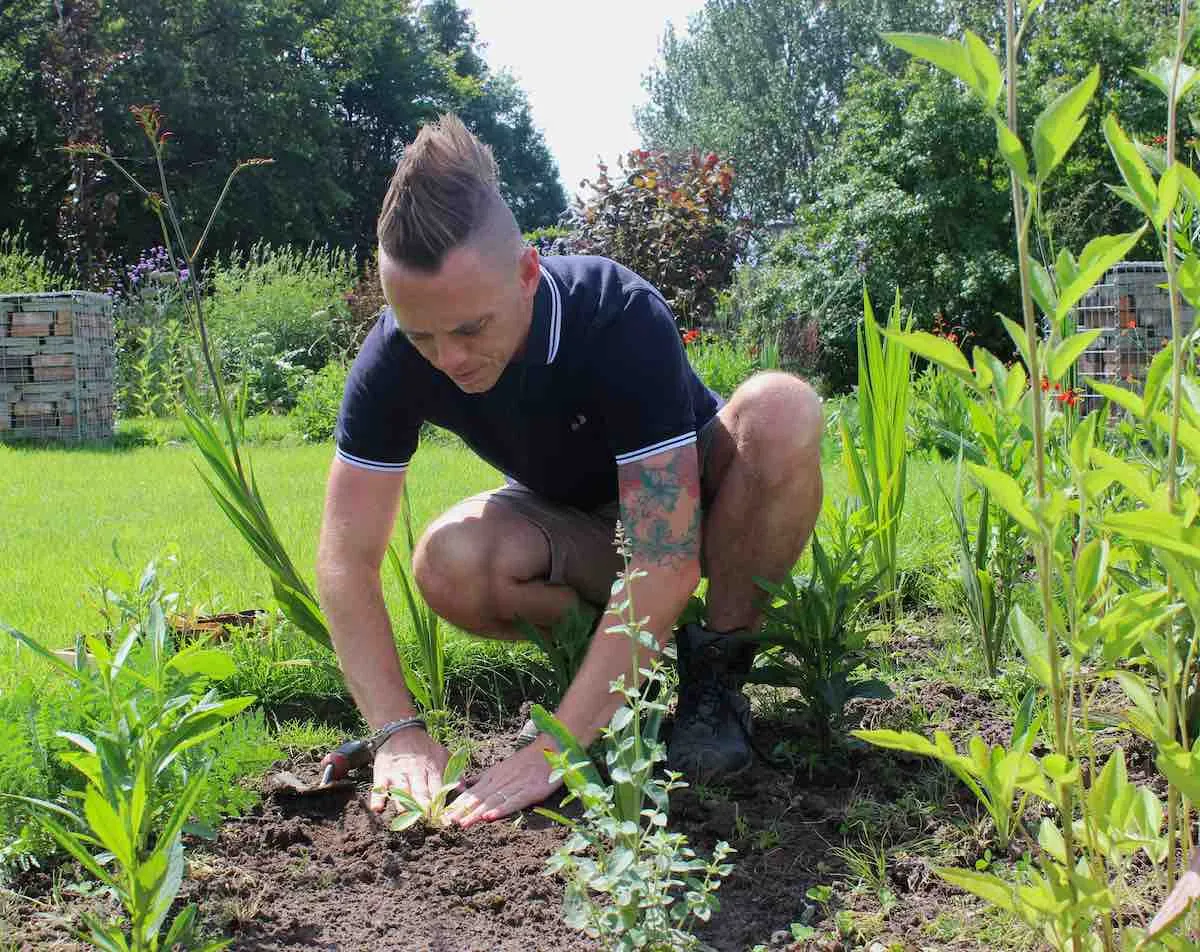Hi @rogiedoo
Thanks for your comment and fantastic pictures of Cannon Ball fungus and what to do about it—if it becomes a problem, that is! My consistent advice with nearly all fungus, even Fairy Ring, is to let it do its thing for the most part. Try to live with it where you can and remove it from problem areas. Fungus is a misunderstood lifeform and a sign of wonderful soil health. In fact, many of our plants, trees, and ecosystems would die without it.
I can appreciate that it's caused some concern in your greenhouse, but there are a few remedies, such as cleaning and changing the compost you use to manage it out of your garden biologically, so please don't panic.
What is Cannonball Fungus
Cannonball fungus, also known as the artillery fungus, is a type of fungus belonging to the genus Sphaerobolus. It typically grows in mulch, wood chips, or other organic matter commonly found in gardens and landscaping. Especially compost that's heavily wood based.
This fungus reproduces by developing small, dark-coloured, spherical structures called peridioles, which resemble tiny cannonballs like you have photographed. When mature, these peridioles are forcibly ejected from the fungus, sometimes reaching heights of several feet like a canon ball.
What causes Cannonball Fungus and how to remove it?
This fungus loves shady, cool spaces, which is why it's often found down the side of houses or greenhouses. The spores are then shit from the peridiole towards the light.
Cannonball fungus thrives in moist environments and is often found in areas with excessive mulch or organic debris. While it doesn't directly harm plants, it can create unsightly stains on surfaces and be difficult to remove.
Rake over any compost mulches which you think contain the fungus Rogiedoo, and then add another layer of a different compost to suffocate the spores, as they need air and light to survive. A gravel mulch can help, or even woodchip as a temporary fix, if it gets starved out.
Is Cannonball Fungus Harmful?
They are harmless to humans and animals and actually a good indicator of soil health but can adhere to nearby surfaces, including houses, cars, and other structures. Which is where it causes issues.
How to clean and remove Cannonball Fungus
The best way to remove said fungus is to change any shop-bought compost to a different brand, always peat-free. If you find it in your own compost bins, then still use it in the garden but obviously away from walls, cars or windows where it can make them as it explodes.
Removing cannonball fungus from cars can be challenging due to the adhesive nature of the spores and the potential for staining. Here are some steps to effectively clean cannonball fungus from car surfaces:
-
Begin by rinsing the affected area with water to remove loose spores and debris. Then, use a hose with a gentle spray or a bucket of water and a soft cloth to wet the surface.
-
Prepare a cleaning solution by mixing warm water with mild detergent or car wash soap in a bucket. Avoid using harsh chemicals or abrasive cleaners, as they may damage the car's paint or finish.
-
Dip a soft sponge or microfiber cloth into the cleaning solution and gently scrub the affected area in a circular motion. Apply light pressure to loosen and lift the fungus spores from the surface.
-
Rinse the sponge or cloth frequently in clean water to prevent spreading the spores. Continue cleaning until the fungus is completely removed from the car's surface.
-
For stubborn stains or dried-on spores, you may need to use a diluted vinegar solution or rubbing alcohol. Apply the solution to a clean cloth and dab it onto the affected area, then gently scrub until the stain is lifted.
- Then rinse!
I hope that helps. Good luck with the rest of your gardening!
Lee Garden Ninja
Hi @rogiedoo
Thanks for your comment and fantastic pictures of Cannon Ball fungus and what to do about it—if it becomes a problem, that is! My consistent advice with nearly all fungus, even Fairy Ring, is to let it do its thing for the most part. Try to live with it where you can and remove it from problem areas. Fungus is a misunderstood lifeform and a sign of wonderful soil health. In fact, many of our plants, trees, and ecosystems would die without it.
I can appreciate that it's caused some concern in your greenhouse, but there are a few remedies, such as cleaning and changing the compost you use to manage it out of your garden biologically, so please don't panic.
What is Cannonball Fungus
Cannonball fungus, also known as the artillery fungus, is a type of fungus belonging to the genus Sphaerobolus. It typically grows in mulch, wood chips, or other organic matter commonly found in gardens and landscaping. Especially compost that's heavily wood based.
This fungus reproduces by developing small, dark-coloured, spherical structures called peridioles, which resemble tiny cannonballs like you have photographed. When mature, these peridioles are forcibly ejected from the fungus, sometimes reaching heights of several feet like a canon ball.
What causes Cannonball Fungus and how to remove it?
This fungus loves shady, cool spaces, which is why it's often found down the side of houses or greenhouses. The spores are then shit from the peridiole towards the light.
Cannonball fungus thrives in moist environments and is often found in areas with excessive mulch or organic debris. While it doesn't directly harm plants, it can create unsightly stains on surfaces and be difficult to remove.
Rake over any compost mulches which you think contain the fungus Rogiedoo, and then add another layer of a different compost to suffocate the spores, as they need air and light to survive. A gravel mulch can help, or even woodchip as a temporary fix, if it gets starved out.
Is Cannonball Fungus Harmful?
They are harmless to humans and animals and actually a good indicator of soil health but can adhere to nearby surfaces, including houses, cars, and other structures. Which is where it causes issues.
How to clean and remove Cannonball Fungus
The best way to remove said fungus is to change any shop-bought compost to a different brand, always peat-free. If you find it in your own compost bins, then still use it in the garden but obviously away from walls, cars or windows where it can make them as it explodes.
Removing cannonball fungus from cars can be challenging due to the adhesive nature of the spores and the potential for staining. Here are some steps to effectively clean cannonball fungus from car surfaces:
-
Begin by rinsing the affected area with water to remove loose spores and debris. Then, use a hose with a gentle spray or a bucket of water and a soft cloth to wet the surface.
-
Prepare a cleaning solution by mixing warm water with mild detergent or car wash soap in a bucket. Avoid using harsh chemicals or abrasive cleaners, as they may damage the car's paint or finish.
-
Dip a soft sponge or microfiber cloth into the cleaning solution and gently scrub the affected area in a circular motion. Apply light pressure to loosen and lift the fungus spores from the surface.
-
Rinse the sponge or cloth frequently in clean water to prevent spreading the spores. Continue cleaning until the fungus is completely removed from the car's surface.
-
For stubborn stains or dried-on spores, you may need to use a diluted vinegar solution or rubbing alcohol. Apply the solution to a clean cloth and dab it onto the affected area, then gently scrub until the stain is lifted.
- Then rinse!
I hope that helps. Good luck with the rest of your gardening!
Lee Garden Ninja
 Lee Burkhill: Award Winning Designer & BBC 1's Garden Rescue Presenters Official Blog
Lee Burkhill: Award Winning Designer & BBC 1's Garden Rescue Presenters Official Blog



